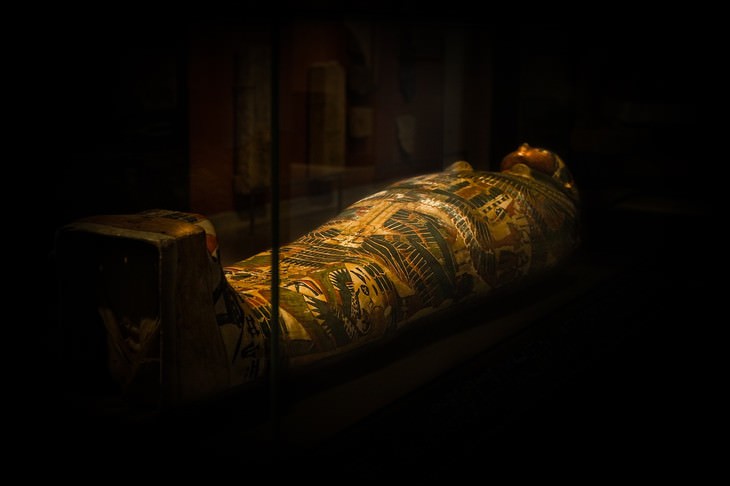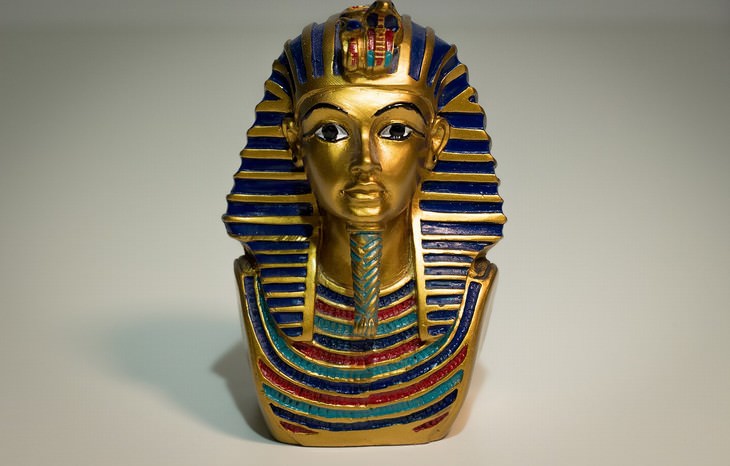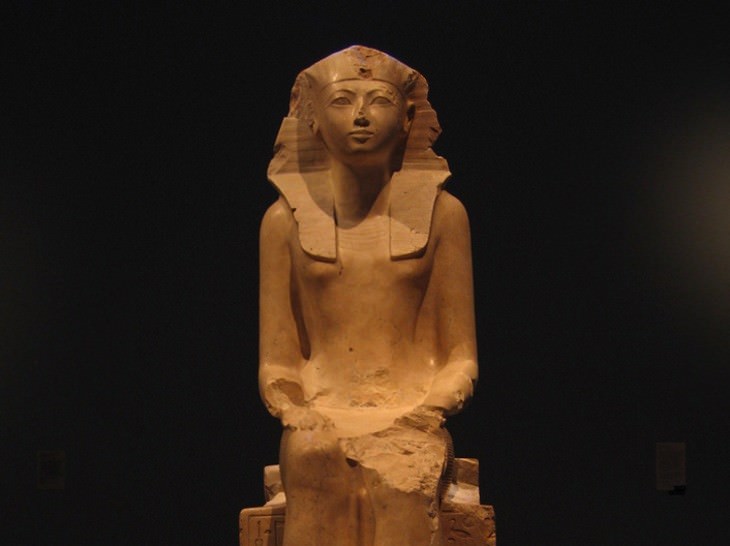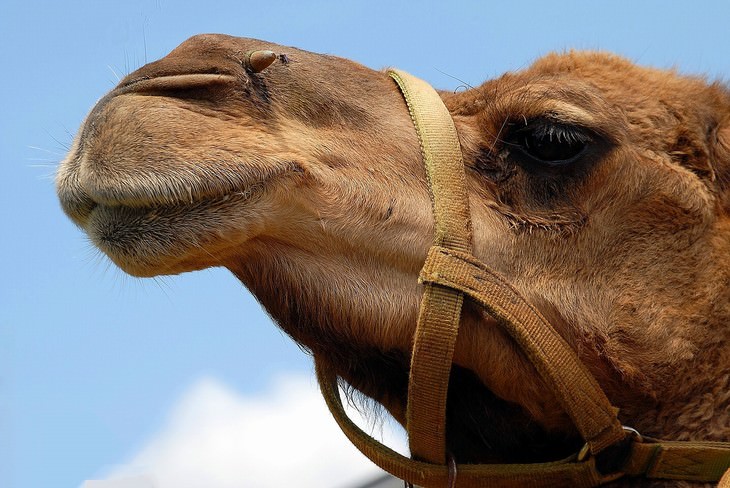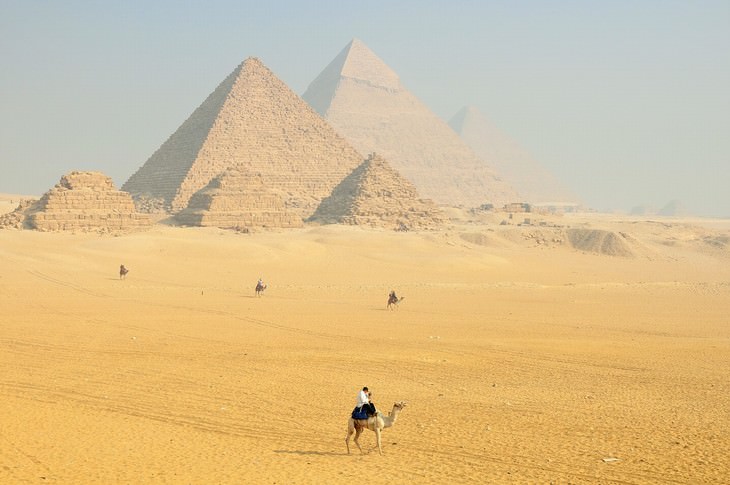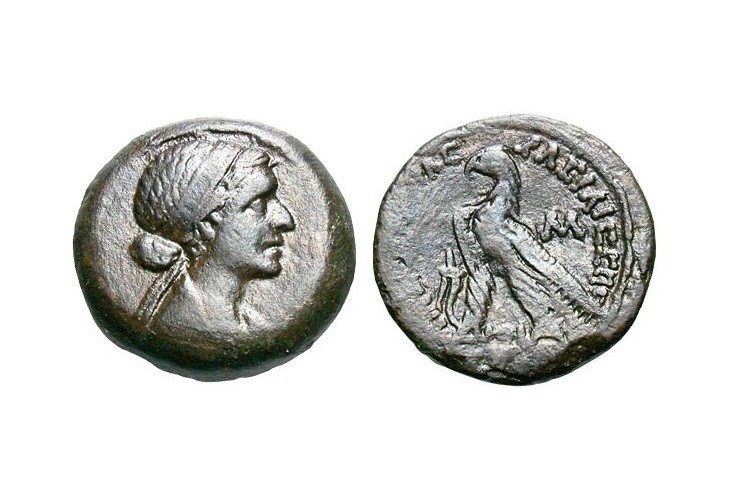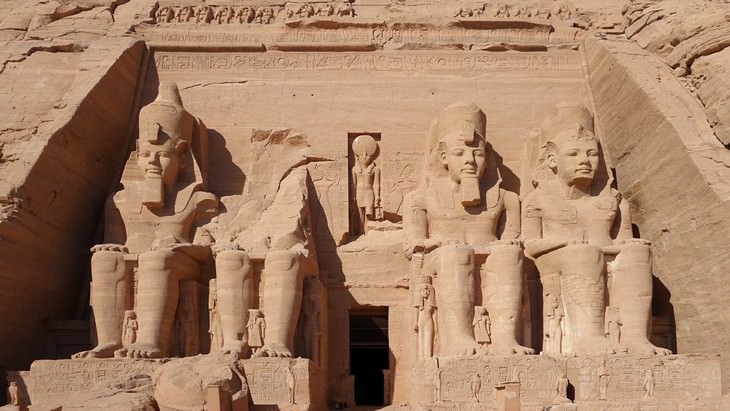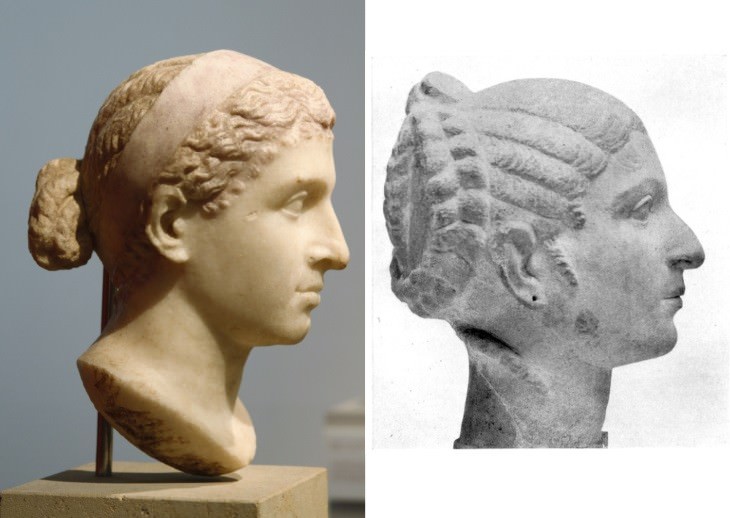1. Not everyone was mummified
Mummification was a common practice in many civilizations, but it was the ancient Egyptians that turned it into a whole science. Turning a body into a mummy was a long, arduous and very expensive process that only the privileged classes could afford. The majority of people, on the other hand, were simply buried in the desert.
This is somewhat problematic, as the ancient Egyptians believed that a person will be able to live in the afterlife only if their body is preserved. But wouldn’t that mean that by reserving mummification only to the rich the simple folk would be denied a life after death?
We will probably never know the answer to that question, but archeologists do point out that, somewhat ironically, the hot desert sands were, in many cases, better at preserving the body than a sarcophagus placed in a cold and moldy tomb.
2. Most of the time, scribes didn’t write in hieroglyphs
Hieroglyphics is a writing system that can be found in many Ancient Egyptian temples, tombs and, of course, the pyramids, but it turns out that it wasn’t the main way of recording things. This is because hieroglyphs are pictograms, meaning that they are a series of small pictures that form sentences when combined in various ways.
You can imagine that inscribing each picture, not to mention a whole text, in this fashion is extremely time-consuming and not very practical. This is why this beautiful pictographic writing system was reserved for historical writing, religious and burial-related texts only, and more mundane matters like trade documents were written in a simplified form of hieroglyphics called hieratic.
With time, they simplified the script even more into the so-called demotic writing. All three of these writing systems were used to record the same spoken language, although few people could actually read in Ancient Egypt (over 90% of the population was illiterate).
3. We don’t know why pharaohs wore false beards
Many ancient Egyptian customs and customary clothing, in particular, are explained in ancient Egyptian or other historical accounts, but we still don’t know why most pharaohs, even the women, wore false beards. The first pharaoh who wore this type of regalia was Pharaoh Djoser in 27 century B.C., and all subsequent rulers were portrayed in this fashion.
Even Pharaoh Hatshepsut, one of the most prominent female rulers of ancient Egypt, often appears with a fake beard.
To this day, we’re not sure why this is the case, but it is speculated that the pharaoh’s “uniform”, beard included, signified their connection to the Gods, and this was a big deal, as pharaohs were considered the embodiment of the god Horus and they typically tried to single themselves out of the crowd in any way they could.
4. Women could and did become king
Although preference was given to male descendants of the previous pharaoh, women, too, could take the throne. We know of at least 3 occasions women fully ruling the country, with the most famous female pharaoh being Hatshepsut, who ruled over Egypt for over 20 years. Her rule brought prosperity to the country, and she is widely known today as the first great woman in history.
But how could a woman become pharaoh?
Based on archeological evidence, scientists believe that women and men in Ancient Egypt had equal social status, with many texts showing that women could own, inherit and sell property, get divorced and raise children on their own. Apart from that, unlike in English, the ancient Egyptian word for ‘king’ is gender neutral, meaning that it could be used to describe both a male and female ruler.
The Egyptian word for ‘queen’, on the other hand, means ‘a king’s spouse’, which didn’t come with all the power and responsibility of a monarch, and so it would be more accurate to classify Sobeknefru, Hatshepsut, and Tausret as kings, and not queens of Ancient Egypt.
5. Ancient Egyptians did not ride camels
If you were to travel to the Egyptian pyramids today, a very authentic way to commute would be to ride on a camel. And while we associate camels with the Middle Eastern region today, it wasn’t until the dawn of the ancient Egyptian civilization that camels were used as a means of transportation.
Instead of camels, ancient Egyptians commuted on donkeys and pack animals on land, but the most common and convenient way to travel was a boat. As you may know, Ancient Egypt was built around the Nile River, which was used to both water the crops and to commute.
Apart from traveling on light papyrus boats themselves, Egyptians dug canals to connect their settlements and other strategically-important locations to the river and used boats to transport heavy shipments of grains and stone to different parts of the country.
6. The Great Pyramid of Giza wasn’t built by slaves
Ancient Greek historian Herodotus mislead us for millennia, but archeologists today managed to prove that the Great Pyramid wasn’t built by 100.000 slaves as Herodotus believed. Instead, 5.000 permanent paid employees and 20.000 temporary ones were involved in the construction.
These people worked in 3-4 month shifts and were summoned from the northern and southern regions of the country. Archeologists found a temporary camp and burial grounds of these workers next to the pyramid, and excavations showed that these people received payment in the form of food and drink, as well as medical attention and burial services when necessary.
7. There was no money in Ancient Egypt
Trade in Ancient Egypt was heavily based on bartering, and most commonly, workers would receive payment in the form of food, fabric and other commodities. However, since Ancient Egypt was a very powerful and wealthy agrarian nation, trading large amounts of goods and services without any fixed monetary standard would prove very difficult.
For these purposes, Egyptians used an “abstract currency” called shat, and later the deben, which seem to be equal to a specific amount of gold or, possibly, silver. Unlike coins, these monetary units weren’t actually exchanged, and instead, you would exchange the products and services themselves.
So, let’s say, you would exchange a certain quantity of fabric that would be worth 3 shat to pay for a bottle of beer and wheat worth equal value. This type of monetary exchange was recorded as early as 2750-2150 B.C., and the first currency in the form of coins didn’t appear until Greeks and Ptolemaic dynasty rulers arrived in Egypt around 332-30 B.C.
Above you can see a coin dated to 51-30 B.C. with an image of Cleopatra.
8. Not all pharaohs built pyramids
While it’s certainly true that the majority of pharaohs of the Old and Middle Kingdoms (c. 2686-1650 B.C.) built pyramids to serve as their place of burial, by 1550 B.C. these large monuments were out of fashion. Nearly all the known rulers of the New Kingdom built 2 funeral buildings instead.
The pharaoh’s mummy would be placed in a hidden chamber cut into the mountains in the Valley of the Kings near Thebes. The second monument would be a large memorial temple (typically with large statues of the pharaoh), which was situated strategically on the border of the fertile land (the world of the living), and the desert (the world of the dead).
After the collapse of the New Kingdom, all subsequent rulers were buried in hidden tombs in the north of Egypt, many of which haven’t been discovered to this day.
10. Cleopatra might have been not as beautiful as rumored
Left: Bust of Cleopatra VII (mid-1st century B.C., Altes Museum, Berlin. Germany) José Luiz Bernardes Ribeiro; Right: Cleopatra bust in the British Museum (c. 50-30 B.C.)
The last queen of Egypt is deeply associated with physical beauty, likely because she managed to seduce two of the most powerful men in the Roman Empire –Julius Caesar and Mark Antony. But was she really as strikingly beautiful as we think?
We have several busts that supposedly depict her, as well as a few coins depicting Cleopatra that survived to this day, but all of them look very different. The coins, for example, show the Egyptian queen with a big crooked nose, a protruding chin, and deep-set eyes, but many historians point out that these hyperbolized manly features were nothing more than a way to inspire power and strength.
The busts, on the other hand, are quite inconsistent, with some making her have sharper and smaller facial features while others depicting her face as very rounded and delicate. The truth is that none of these visual replicas of the queen are a genuine and reliable representation of Cleopatra, and recorded historical mentions of the queen are just as inconsistent.
What all the historians agree on, however, is that the queen’s influence was thanks to her intelligence, charisma and extraordinary talent to communicate and convince people. And while we may never know how beautiful Cleopatra was physically, her story definitely teaches us that fixating on appearance may be the wrong tactics.
Related Articles:

